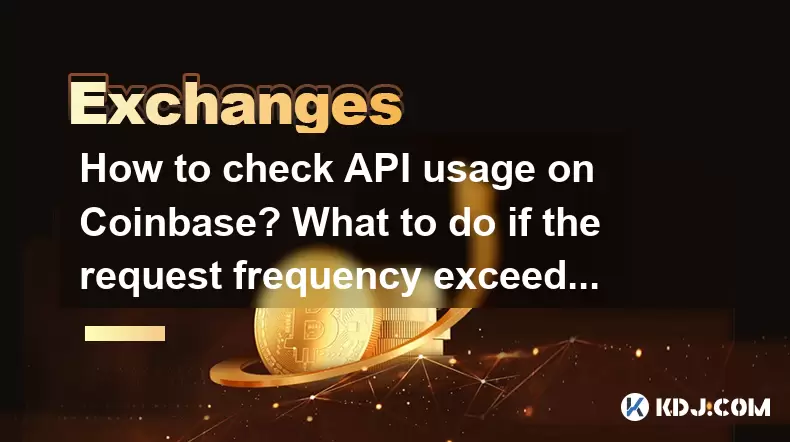-
 Bitcoin
Bitcoin $117500
2.15% -
 Ethereum
Ethereum $3911
6.19% -
 XRP
XRP $3.316
10.79% -
 Tether USDt
Tether USDt $1.000
0.01% -
 BNB
BNB $787.2
2.24% -
 Solana
Solana $175.2
4.15% -
 USDC
USDC $0.9999
0.00% -
 Dogecoin
Dogecoin $0.2225
8.40% -
 TRON
TRON $0.3383
0.28% -
 Cardano
Cardano $0.7868
6.02% -
 Stellar
Stellar $0.4382
9.34% -
 Hyperliquid
Hyperliquid $40.92
7.56% -
 Sui
Sui $3.764
7.63% -
 Chainlink
Chainlink $18.48
10.66% -
 Bitcoin Cash
Bitcoin Cash $582.1
1.88% -
 Hedera
Hedera $0.2601
6.30% -
 Avalanche
Avalanche $23.33
4.94% -
 Ethena USDe
Ethena USDe $1.001
0.02% -
 Litecoin
Litecoin $122.3
2.04% -
 UNUS SED LEO
UNUS SED LEO $8.969
-0.27% -
 Toncoin
Toncoin $3.339
0.86% -
 Shiba Inu
Shiba Inu $0.00001287
4.30% -
 Uniswap
Uniswap $10.43
7.38% -
 Polkadot
Polkadot $3.861
5.08% -
 Dai
Dai $1.000
0.02% -
 Bitget Token
Bitget Token $4.513
3.41% -
 Monero
Monero $267.7
-6.18% -
 Cronos
Cronos $0.1499
4.14% -
 Pepe
Pepe $0.00001110
5.15% -
 Aave
Aave $284.9
8.28%
How to check API usage on Coinbase? What to do if the request frequency exceeds the limit?
To monitor API usage on Coinbase, log in, go to settings, select your API key, and view usage stats; implement retries if you exceed rate limits.
May 17, 2025 at 11:43 pm

Coinbase, as one of the leading cryptocurrency exchanges, provides robust APIs for developers to interact with its platform. Understanding how to monitor your API usage is crucial to ensure your applications run smoothly without interruptions due to exceeding usage limits. In this article, we will guide you through the process of checking your API usage on Coinbase and what to do if your request frequency exceeds the limit.
Checking API Usage on Coinbase
To monitor your API usage on Coinbase, you need to access the API key management section on the Coinbase website. Here's a detailed step-by-step guide:
- Log into your Coinbase account. Navigate to the Coinbase website and enter your credentials to access your account.
- Go to the API settings. Once logged in, click on your profile icon in the top right corner, and select "Settings" from the dropdown menu. Then, navigate to the "API" section.
- Select your API key. In the API settings, you will see a list of your created API keys. Click on the key you want to monitor.
- View usage statistics. After selecting your API key, you will see detailed usage statistics. These statistics include the number of requests made, the time frame of those requests, and any limits you are approaching or have exceeded.
Important: Keep an eye on the "Rate Limit" section, which shows your current usage against your allowed limit.
Understanding API Rate Limits on Coinbase
Coinbase imposes rate limits to ensure fair usage of its API resources. These limits vary based on the type of API endpoint you are using and the tier of your API key. Here's a breakdown of the rate limits:
- Public endpoints typically have higher rate limits since they do not require authentication. For example, fetching market data might have a limit of 10 requests per second.
- Private endpoints, which require authentication, have lower rate limits to protect user data. For instance, accessing your account balance might be limited to 3 requests per second.
Key Point: Always refer to Coinbase's official documentation for the most current rate limits as they may change over time.
What to Do If Your Request Frequency Exceeds the Limit
If your application's request frequency exceeds the API rate limit, you will receive an error response from Coinbase. Here are the steps to take to handle this situation:
- Identify the error. When your request frequency exceeds the limit, Coinbase will return an HTTP status code of 429 (Too Many Requests). The response will also include a "Retry-After" header, indicating the number of seconds you should wait before retrying the request.
- Implement a retry mechanism. In your application code, you should implement a retry mechanism that respects the "Retry-After" header. Here's a basic example of how you might do this in Python:
import time
import requestsdef make_request_with_retry(url, headers, max_retries=3):
for attempt in range(max_retries):
response = requests.get(url, headers=headers)
if response.status_code == 429:
retry_after = int(response.headers.get('Retry-After', 1))
print(f"Rate limit exceeded. Retrying in {retry_after} seconds...")
time.sleep(retry_after)
elif response.status_code == 200:
return response.json()
else:
print(f"Unexpected error: {response.status_code}")
if attempt == max_retries - 1:
raise Exception("Max retries reached")
return None
- Optimize your request frequency. Analyze your application to see if you can reduce the number of requests. For example, batching multiple operations into a single request or caching frequently accessed data can help.
- Upgrade your API key. If your application requires a higher rate limit, consider upgrading your API key to a higher tier. Coinbase offers different tiers with varying rate limits and features.
Best Practices for Managing API Usage
To ensure your application remains within the API limits, follow these best practices:
- Monitor your usage regularly. Use the API key management section to keep an eye on your usage patterns and adjust your application accordingly.
- Implement rate limiting in your application. Even before hitting Coinbase's limits, implement your own rate limiting to prevent sudden spikes in traffic.
- Use asynchronous requests. If your application can handle it, use asynchronous requests to spread out the load over time.
- Document and review your API calls. Keep a log of your API calls and review them periodically to identify any unnecessary requests.
Troubleshooting Common Issues
When dealing with API usage and rate limits, you might encounter some common issues. Here's how to troubleshoot them:
- Unexpected 429 errors. If you're receiving 429 errors unexpectedly, check if your application is making requests too quickly. Ensure your retry mechanism is correctly implemented and respects the "Retry-After" header.
- Inconsistent usage data. If the usage data in the API key management section seems inconsistent, refresh the page or log out and log back in to ensure you're seeing the latest data.
- API key revocation. If your API key is revoked due to excessive usage, contact Coinbase support with details of your usage and request a review. Be prepared to explain your usage patterns and any steps you've taken to mitigate the issue.
Frequently Asked Questions
Q: Can I increase my API rate limit temporarily during high-traffic periods?
A: Coinbase does not offer temporary increases in rate limits. You should consider upgrading your API key to a higher tier if you anticipate high traffic.
Q: Is there a way to get real-time notifications about my API usage?
A: Coinbase does not currently provide real-time notifications for API usage. You can monitor usage manually through the API key management section or implement a monitoring system in your application.
Q: What happens if I exceed the rate limit multiple times in a short period?
A: Repeatedly exceeding the rate limit can lead to your API key being temporarily or permanently revoked. It's crucial to implement proper rate limiting and retry mechanisms to avoid this.
Q: Can I use multiple API keys to bypass rate limits?
A: Using multiple API keys to bypass rate limits is against Coinbase's terms of service and can result in all your keys being revoked. Instead, focus on optimizing your request frequency and consider upgrading your API key if necessary.
Disclaimer:info@kdj.com
The information provided is not trading advice. kdj.com does not assume any responsibility for any investments made based on the information provided in this article. Cryptocurrencies are highly volatile and it is highly recommended that you invest with caution after thorough research!
If you believe that the content used on this website infringes your copyright, please contact us immediately (info@kdj.com) and we will delete it promptly.
- XRP ETF, Bitcoin ETF, and Japan: A New Era for Crypto Investing?
- 2025-08-08 14:30:12
- Crypto, Congress, and Bills: Navigating the Regulatory Landscape in 2025
- 2025-08-08 14:30:12
- Union Jack Oil, Unused Gas, and Bitcoin: A New York Minute on UK's Crypto-Energy Play
- 2025-08-08 14:50:12
- Bitcoin Price: Bullish Flag Points to $123K Breakout?
- 2025-08-08 14:50:12
- Crypto Group's WNBA Dildo Toss: Meme Coin Mania or Just Plain Dumb?
- 2025-08-08 14:55:13
- Stablecoins, Hong Kong, and On-Chain Finance: Navigating the Regulatory Maze
- 2025-08-08 12:30:12
Related knowledge

How to use margin trading on Poloniex
Aug 08,2025 at 09:50am
Understanding Margin Trading on Poloniex

How to use advanced trading on Gemini
Aug 08,2025 at 04:07am
Understanding Advanced Trading on GeminiAdvanced trading on Gemini refers to a suite of tools and order types designed for experienced traders who wan...

How to deposit USD on Bitstamp
Aug 07,2025 at 05:18pm
Understanding Bitstamp and USD DepositsBitstamp is one of the longest-standing cryptocurrency exchanges in the industry, offering users the ability to...

How to use the Kraken Pro interface
Aug 08,2025 at 09:57am
Understanding the Kraken Pro Interface LayoutThe Kraken Pro interface is designed for both novice and experienced traders seeking a streamlined experi...

How to find my transaction ID on Gemini
Aug 08,2025 at 12:50am
Understanding the Transaction ID in Cryptocurrency ExchangesA transaction ID (TXID) is a unique alphanumeric string that identifies a specific transfe...

How to calculate crypto taxes from Binance
Aug 08,2025 at 07:56am
Understanding Cryptocurrency Taxation on BinanceCalculating crypto taxes from Binance requires a clear understanding of how tax authorities classify d...

How to use margin trading on Poloniex
Aug 08,2025 at 09:50am
Understanding Margin Trading on Poloniex

How to use advanced trading on Gemini
Aug 08,2025 at 04:07am
Understanding Advanced Trading on GeminiAdvanced trading on Gemini refers to a suite of tools and order types designed for experienced traders who wan...

How to deposit USD on Bitstamp
Aug 07,2025 at 05:18pm
Understanding Bitstamp and USD DepositsBitstamp is one of the longest-standing cryptocurrency exchanges in the industry, offering users the ability to...

How to use the Kraken Pro interface
Aug 08,2025 at 09:57am
Understanding the Kraken Pro Interface LayoutThe Kraken Pro interface is designed for both novice and experienced traders seeking a streamlined experi...

How to find my transaction ID on Gemini
Aug 08,2025 at 12:50am
Understanding the Transaction ID in Cryptocurrency ExchangesA transaction ID (TXID) is a unique alphanumeric string that identifies a specific transfe...

How to calculate crypto taxes from Binance
Aug 08,2025 at 07:56am
Understanding Cryptocurrency Taxation on BinanceCalculating crypto taxes from Binance requires a clear understanding of how tax authorities classify d...
See all articles

























































































